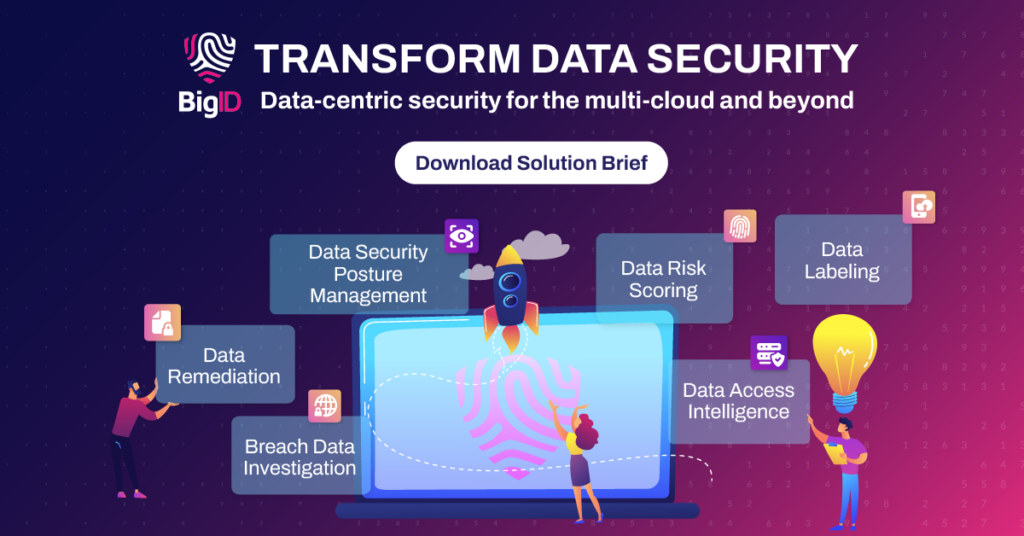Data Detection and Response (DDR) For Proactive Data Security Posture Management
Businesses must protect their data from cyber-attacks, for three main reasons:
First, companies are legally obligated to keep customer information safe.
Second, not doing so can harm their reputation.
Third, remediating the effects of a data breach can be expensive and often disrupt operations.
According to Gartner, 50% of all security alerts will be handled by automated security solutions, such as data detection and response (DDR) tools. This indicates the growing importance of automated detection and response capabilities in the fight against cyber threats.
Is your organization trying to maintain a strong cybersecurity posture? Consider including DDR in your organization’s data security posture management (DSPM) strategy.
In this guide to data detection and response, we shall explain what it is, how it works, and how it keeps your data safe.
What is Data Detection and Response (DDR)?
Before data security was automated, businesses usually detected data breaches after the fact. With proactive data security measures, however, we can use automation to pick up threat signals before they escalate into attacks.
DDR is one such solution. Unlike traditional security tools, DDR provides continuous data loss prevention (DLP) and automated response mechanisms to threats.
It also monitors sensitive data at its source by constantly looking for signals of malicious or unsafe data activity. If it identifies a potential risk, it will send out an alert to your security team. To contain the threat, it might block access to certain resources, isolate affected devices, or shut down affected systems altogether.
To protect your data, DDR can:
- Monitor your data and user activity in real time to analyze events and flag any risk before it becomes a threat.
- Alert you if it detects any sensitive data being moved or copied.
- Use contextual information based on regular user behavior to prioritize the threat levels of data activities and flag the issue with your security team if needed.
- Enforce data protection regulatory standards as well as your organization’s data governance policies.
DDR in Cloud Security Posture Management
Traditional DLP cannot cope with cloud data security. Legacy data protection systems secure the perimeter with tools like firewalls. Unfortunately, these legacy DLP techniques don’t work effectively with cloud services, which necessitates the use of DDR for better cloud data protection.
The data landscape, flows, and access models are quite different in SaaS and IaaS environments compared to on-premise. Multi-cloud environments may also see data activity and movement across different cloud services and providers.
Legacy DLP may find it difficult to track data in such environments.
Another issue is business expansion. One of the biggest advantages that the cloud offers is that you can grow your operations in the cloud quite easily. But, unfortunately, traditional DLP tools might not be able to handle this growing volume of data that easily.
In short, these solutions lack the visibility, scalability, and flexibility needed to protect data in the cloud—especially multi-cloud—environment.
On the other hand, DDR is DLP designed for cloud environments. It can monitor data across different locations. Unlike perimeter-defense-based solutions, it can adapt to increasing data volumes quite easily.
Furthermore, it instantly alerts you of any suspicious data movement, including attempts to move or copy it.

How Does DDR Work?
A data detection and response solution has four components:
- Monitoring
- Detection
- Alerts
- Response
Monitoring
This component constantly watches all activity across your data environments using activity logs. To make it even more cost-effective, you can customize it to only monitor the type of data you’ve classified as sensitive.
Detection
Any suspicious data activity or anomalous access can be a potential threat to your data. The detection component uses behavior analytics and machine learning to identify them in real time. A DDR solution might detect:
- Data access from an unusual location or IP address
- Large volumes of sensitive data being downloaded, copied, or moved
- Deactivation of the logging system for sensitive data
- Sensitive data being downloaded by someone external to the organization
- Sensitive data being accessed by someone for the first time
Alerts
When the DDR system detects any anomalous data access, it will notify the security team.
These tools will only flag incidents related to sensitive data to avoid spamming the team with warnings that aren’t significant, to prevent alert fatigue—a phenomenon where the person stops paying attention to alerts because there are so many of them.
Response
For certain incidents, the DDR tool can carry out automated mitigation procedures without any human input required. This immediate incident response can prevent a potential security breach and protect sensitive data without human intervention.
Why Is Your Data at Risk?
Data is a business’s most valuable asset.
Business data often includes proprietary or business-sensitive information and intellectual property. You could also have customers’ personally identifiable information (PII) or protected health information. It must be protected from unauthorized access.
However, there are several factors that put this information at risk:
Human Error
It’s not always malicious actors going after your business data that are a threat. Data mismanagement can be caused by human error.
An employee might inadvertently delete sensitive information. They might handle sensitive information insecurely, potentially revealing it to people who don’t need to see it.
Of course, threat actors also use these lapses of judgment to their advantage. They might exploit weak passwords or use phishing techniques to get access to your organization’s data.
Perimeter defenses can only go so far when it’s the behavior of the people inside the walls that’s creating the data threats.
Shadow Data
Not all of your business data is organized and mapped. Some of it—referred to as shadow data—lives in the shadows, so to speak.
It’s unstructured data that wasn’t categorized, classified, and stored properly.
It’s critical data left undeleted or unarchived in the cloud once the project it was needed for was completed.
It’s also data that employees store or share through unauthorized cloud applications because it is convenient.
In short, it’s data that belongs to you but you either don’t know it exists or you don’t know where it resides, making it crucial to classify data effectively. Since it’s ungoverned, it’s at risk.
Fragmented Data
If your business uses multiple cloud services, your data will most likely be distributed across all of them. Unfortunately, in this scenario, you’d be dealing with variable security and management practices and inconsistent data protection.
How do you enforce uniform security policies when information is constantly moving?
Legacy DLP isn’t equipped to deal with these three risk factors. It can’t monitor employee activity or keep an eye on data in the cloud.
That’s where DDR comes in.
Benefits of DDR
We know what DDR can do and how it works. We also know the risks faced by your business data that legacy DLP solutions can’t solve. Now, let’s take a look at how DDR keeps you and your data safe.
Proactive Rather Than Reactive Threat Detection
With DDR, you’re not waiting for an incident before trying to remediate it. These solutions are constantly scanning for anything that has the potential to become a threat. Instead of trying to react to a security incident, these solutions warn you before the breach can take place.
Data Monitoring at the Source
Traditional data protection systems assumed that if there were no signs of forced entry, the data was safe. DDR, on the other hand, watches data stores, warehouses, and lakes across different environments to monitor all activity.
If it detects anything out of the ordinary, including data being moved, it will flag it with the security team. Alternatively, it might take pre-determined actions to stop misuse or potential data breaches.
Optimized Data Classification
All data is not equally sensitive or important. Therefore, you wouldn’t secure all data equally, as that would be inefficient. To determine what needs more protection, you first need to classify it.
DDR helps you with data discovery to find where it is located and prioritizes it based on content and context so you can match the levels of protection to its sensitivity and importance.
Quicker Data Exfiltration Prevention
Data exfiltration—or information stealing—is a big data security threat. While traditional DLP tools can prevent malware from stealing data, DDR can warn you of an unauthorized data transfer, or when someone is manually copying or moving information. This can help you catch data exfiltration as it happens, so you can take steps to stop it.
Effective Investigation
If a security incident does occur, DDR gives you a better understanding of what’s been compromised and how it will affect you. It can help you investigate and remediate more effectively.
Lower Costs and Minimized Alert Fatigue
Redundant alerts and false positives that you inevitably get from traditional DLP solutions will lead to alert fatigue.
A DDR tool, on the other hand, can monitor your data 24/7, without losing focus. It will also cost less than employing people. And, it will only flag issues that need human intervention.
Reduced Risk of Legal Violations
Data protection regulations require you to have adequate checks in place to protect sensitive customer data. Failure to comply with these regulations can lead to fines from various governing bodies.
Using DDR solutions can demonstrate you’re taking proper steps to keep your data safe. Plus, they will flag any violations as soon as they happen, bringing down your business risk.
BigID’s Approach to Data Detection and Response
BigID is a data privacy and protection platform that helps organizations successfully implement a data detection and response (DDR) framework.
The platform helps you discover and classify sensitive data across all data sources, including structured and unstructured data. It gives a better understanding of where your sensitive data is stored so you can prioritize your efforts to protect it.
It creates a data map of your sensitive data, including information on data owners, data flows, and data retention policies to help you manage data risk and comply with data privacy regulations.
BigID inventories all of your sensitive data, including data lineage and data quality insights, and allows you to maintain an accurate and up-to-date record of your data assets.
Our data governance platform uses machine learning and artificial intelligence to analyze data usage patterns and identify data risks. This information helps you prioritize your data protection efforts and prevent data security threats from escalating.
Its incident response capabilities include automated alerts and notifications, incident tracking, and regulatory reporting to help you respond quickly and effectively to security incidents, and reduce the impact of data breaches.
Ready to take the first step toward proactive data security? Read our blog on the six ways to automate data discovery.


